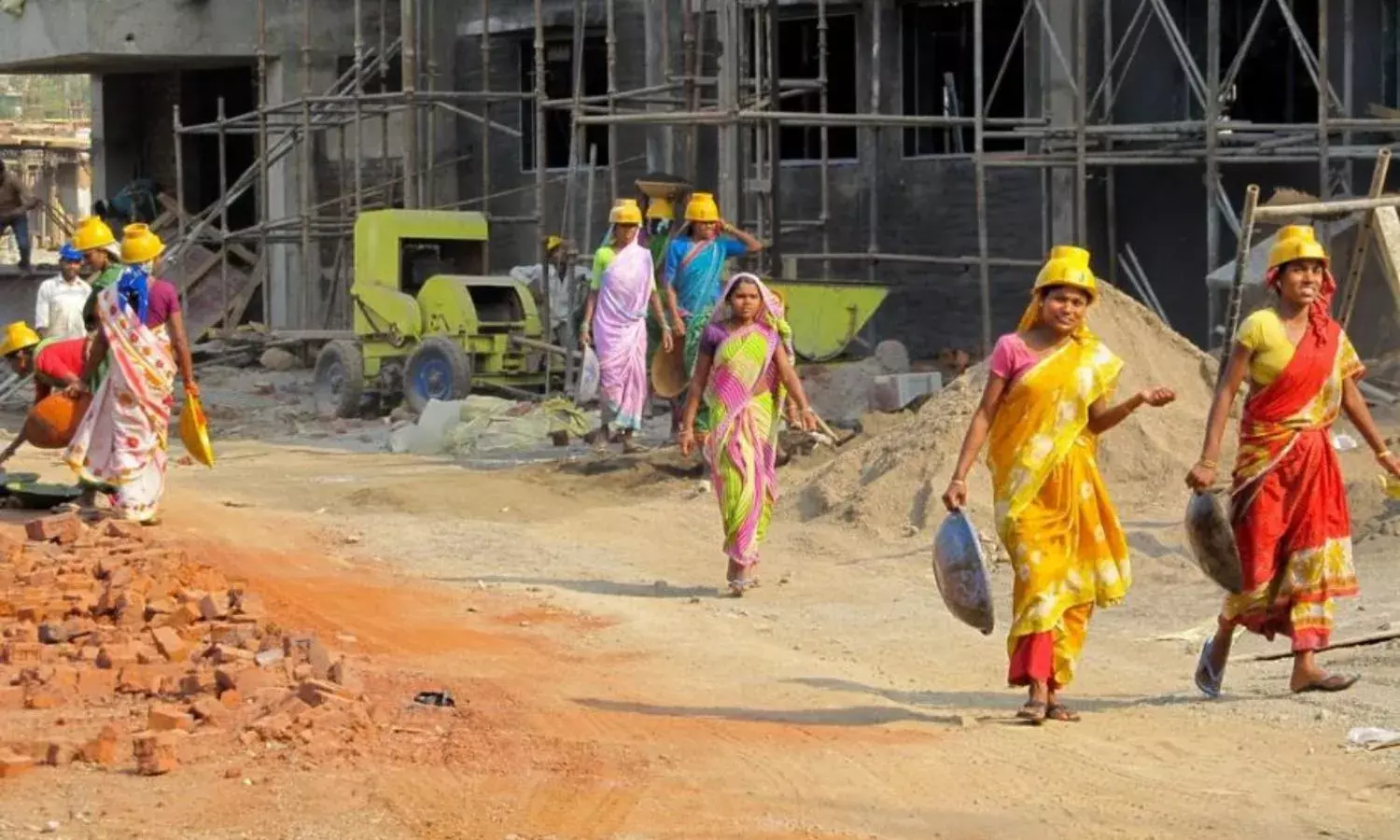The Underpaid and Overexploited Women Workers of Delhi
Minimum wages denied;

Twenty-year-old Neeta (name changed) works as a contract worker in a Paying Guest Accommodation (PG) in Bharat Nagar, New Delhi. For a meagre salary of Rs 10,000, she toils tirelessly from 6 am to 11 pm, 7 days a week. She has no idea about her rights and entitlements to overtime wages and more so, the minimum wage she ought to receive.
Neeta is not alone in her exploitation and ill-treatment. Many women like her are laboring endlessly for negligible wages in many commercial and industrial establishments, in and around Delhi. Women workers working on government payroll suffer from the same fate.
Consider the case of Rama (name changed). She has been working as a laborer for about a year in one of the Delhi Development Authority (DDA) maintained parks in Shalimar Bagh, Delhi. On being asked about her monthly wages, she hesitantly replies that she gets only Rs 6,000 for her sustenance, as around Rs 5,000 is to be given back to the contractor on receipt of the wages.
The idea of giving minimum wages to every worker, so idealistic and labor-benefitting its conception, struggles to find its footing in reality in the nation’s capital. But it is the womenfolk, especially, who bear the major brunt of this.
A 2019 Deloitte report titled Empowering Women & Girls in India for the Fourth Industrial Revolution states that 95 percent or 195 million women in our country are employed in the unorganized sector are highly underpaid or engaged in unpaid work. It comes as no surprise then, that they are highly exploited and paid less than the stipulated minimum wages, in most parts of Delhi.
The Government of NCT of Delhi had brought forth a revised rate of minimum wage slabs in November 2018. According to this, an unskilled worker is entitled to a minimum wage of Rs 14,842 per month, a semi-skilled worker would get Rs 16,341 and a skilled worker Rs17,991. It is supposed to benefit around 5.5 million workers in the city. A Minimum Wage Advisory Board was constituted to assess the prevailing prices of basic necessities like food, electricity etc. and come up with these revised rates
However, the implementation leaves much to be desired, since the reality is far from what was promised. “ Most industries and commercial places do not meet the minimum wage criteria in the state. In most cases, women are not paid more than Rs 5,000-6,000 a month for their labor, even when their male counterparts are earning significantly more every month for the same job. Private schools, hospitals, and other institutions do not pay more than Rs 10,000 per month,” says Jawahar Lal Prasad, member, Delhi Minimum Wage Advisory Board.
Especially in Delhi, which houses many industrial hubs like Wazirpur, Mayapuri, Okhla, and Sahibabad, industrial workers are often short-changed and mistreated. Laborers in Mayapuri and Okhla regions of Delhi have complained of employers taking back the money from their account after transferring it and keeping their passbook and signed bank cheque books. This, despite operations and crackdowns launched by the government to catch hold of the violating employees who do not pay minimum wages.
Rukshana, an activist with the Akhil Bharatiya Janwadi Mahila Samiti (ABJMS), the women’s wing of Communist Party of India says that women are often not paid on time and sometimes, not at all. Be it women working in industries or domestic workers, they are all oppressed, especially in the National Capital Region.
While the demands of these women have been placed in front of the Center and state governments, their efforts are yet to yield fruits. The ABJMS has submitted their case to the government last year, highlighting the pitiable conditions of women workers, They are yet to receive a response.
However, Kuldeep Sachdeva, Secretary, Indian National Trade Union Congress (INTUC) is more positive about the minimum wage scenario in the government sector. “Agreed, there are around 5-10% of contractors who are not working according to the law. They take back money from the workers. But mostly, the situation in Delhi is not so bad. The laborers get their money in their bank accounts directly.”
One of the major reasons why women have been consistently paid less than minimum wages is the recognition that women do not unionize, nor do they agitate when paid less. Also, they rarely ask for a hike in wages or demand money for their overtime. In the larger sphere, their work is discounted and not counted in the national labor statistics. They rarely have knowledge about their entitlements to minimum wages and other rights, which makes it easier for employers to exploit them.
Perhaps, this is why Kajal, a 17-year-old contact worker in Okhla accepts it as her fate as she works for more than 18 hours a day, earning only Rs 10,000 a month. And many more Gudias’ and Kajals’ continue to live in pathetic conditions, underpaid and overexploited in Delhi, for the single reason that they are women.

